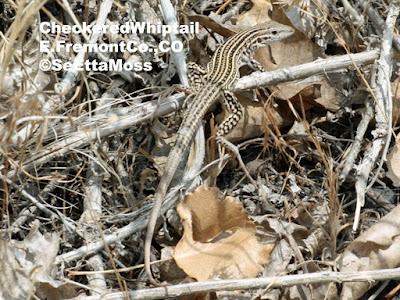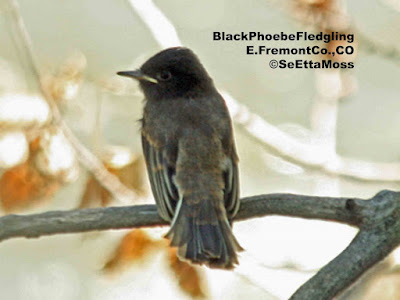Checkered Whiptail

Checkered Whiptails are found in southeast parts of Colorado. There are both diploid and triploid checkered whiptails but they are very difficult to tell apart. Our Colo Division of Colorado Herpetology Coordinator, Tina Jackson, told me that Diploids have only been confirmed in Otero, Baca and Las Animas Counties in far southeastern Colo so this lizard is in all probability a triploid, which is a species of concern in Colorado. SeEtta









